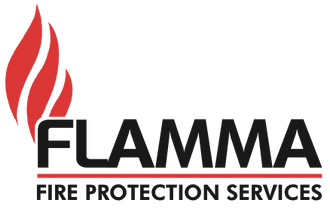Intumescent coating applications for different substrates- passive fire protection products
- Guides
- 10 Jan, 2023
What are the different substrates we operate on?
Our passive fire protection intumescent coating systems can be applied to steel, timber, concrete and lath and plaster and we can protect also plastic materials. There are different passive fire protection coating systems for different substrates and the methodology differs slightly for each coating system. Here are some below:
HW System

Used for Timber, wood and wood derived materials. Our passive fire protection HW system is especially suitable for use on insulation board, MDF board, plasterboard, wood, and some wood-derived products. There is no need to strip off the existing paint or varnish as Envirograf passive fire protection adhesion primer is also available. It is a range of white and clear coatings, white being HW01 and clear being HW02, which is perfect for upgrading doors fire rated to 30 or 60 minutes and can upgrade wooden panelling. Our passive fire protection HW systems can be used internally and externally depending on which system you use. We also provide our own top coat for passive fire protection HW systems also to provide a clean, smooth finish.
Q/VFR & ES/VFR system

The passive fire protection Q/VFR system is a two-coat system for which can be used internally only and is used on Timber, bamboo, chipboard, decorative laminates, furniture, plywood, MDF, melamine and other wood derived materials. Additionally, provides UV protection for external timber. This passive fire protection coating system comes in two colours either clear or coloured giving class 0 and class 1 EU SBI/B/s1/do. Also 20 minutes of passive fire protection.
Passive Fire Protection ES/VFR System For Internal And External use
Passive fire protection fire retardant coating for timber for external or internal purpose. The passive fire protection ES/VFR system is a two-coat system that should have a top coat applied whether you use the white or clear system.
EP/CP system

Passive Fire Protection Fire-resistant aqueous paint for lath and plaster to upgrade the surface. A white, or coloured, passive fire protection fire-resistant Intumescent coating system, offering fire protection to plasterboard or lath-and-plaster ceilings and walls of various thicknesses. This passive fire protection coating system is a very effective passive fire protection method for when plaster board needs protected and the installation of fire stopping structures is not possible. Lots of listed buildings walls are built with plaster board, proving this passive fire protection coating system an asset for heritage building projects. You can see proof of this with our approved installer Flamma Ltd who completed a large project in a listed building in Dublin. Read about this here.
The passive fire protection EP/CP system involves a primer, EP/CP/P, so there is no need to strip any previously applied paint.
The passive fire protection EP/CP can also be used on concrete by a 3 coat application, of primer, intumescent and top coat, you can refer to these coats on our website. This is a very cost effective form of passive fire protection on such projects such as underground car parks. Such projects have been undertaken on the channel tunnel and multi story car parks.
EP/FS/IN coating

This passive fire protection coating system is used on steel and aluminium materials. This is a water based passive fire protection paint can be rolled, hand painted a sprayed and provides a smooth, clean finish. Passive fire protection on steel structures of buildings is crucial as without it, a building is susceptible to collapsing in the event of a fire as the temperature of steel can rise rapidly to temperatures of around 550 degrees celsius and melt, causing it to lose its capacity to hold structural integrity of the building. The passive fire protection EP/FS/IN will offer up to 90 minutes passive fire protection for a building and is in accordance with the building regulations and registrations.
EP/C coating

A passive fire protection white protective coating for PVC, glass fibre, and also UPVC. This passive fire protection coating forms a protective intumescent foam layer which will protect the material when exposed to fire or excessive heat. This passive fire protection coating can be used for electrical cables, cable housings and engine housings. Electrical fires are a massive risk to buildings as they re difficult to attack at the source and the signs can be odourless and invisible.


